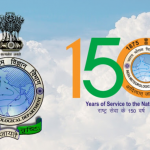Gestational diabetes mellitus (GDM) traditionally refers to abnormal glucose tolerance with onset or first recognition during pregnancy. GDM has long been associated with obstetric and neonatal complications primarily relating to higher infant birth weight and is increasingly recognized as a risk factor for future maternal and offspring cardio metabolic disease.
The prevalence of GDM continues to rise internationally due to epidemiological factors including the increase in background rates of obesity in women of reproductive age and rising maternal age and the implementation of the revised International Association of the Diabetes and Pregnancy Study Groups’ criteria and diagnostic procedures for GDM.
I was recently reading a Clinical update on Gestational Diabetes Mellitus from Endocrine Society (USA), of which I happen to be an honorary member. I could acknowledge the update and thought to put forward some inferences.
Pathophysiology of GDM
Normal pregnancy is associated with marked changes in glycaemic physiology. There is a progressive increase in insulin resistance, predominantly due to increased circulating placental hormones including growth hormone, corticotrophin-releasing hormone, human placental lactogen, prolactin, oestrogen, and progesterone. Increased maternal adiposity particularly in early pregnancy also promotes insulin resistance, contributing to facilitated lipolysis by late pregnancy. The resultant increase in maternal free fatty acid (FFA) levels exacerbates maternal insulin resistance by inhibiting maternal glucose uptake and stimulating hepatic gluconeogenesis
This progressive rise in maternal insulin resistance underpins the delayed testing approach to GDM, aiming to maximize detection of GDM when insulin resistance is at its greatest in mid- to late gestation.
GDM is characterized by a relative insulin secretory deficit, in which maternal β-cell insulin secretion is unable to compensate for the progressive rise in insulin resistance during pregnancy. This leads to decreased glucose uptake, increased hepatic gluconeogenesis, and maternal hyperglycaemia. It is hypothesized that this results from the failure of β-cell mass expansion. Hyperlipidaemia, characterized predominantly by higher serum triglycerides, may also cause lipotoxic β-cell injury, further impairing insulin secretion. The pathogenesis of GDM therefore parallels that of type 2 diabetes, characterized by both increased insulin resistance and relative insulin deficiency arising from a reduction in β-cell function and mass.
Key Risk Factors for GDM
- Previous GDM.
- An ethnicity with a high prevalence of diabetes.
- Maternal age > 35 years.
- Family history of diabetes (first-degree relative with diabetes).
- Obesity (BMI > 30 kg/m2).
- Previous macrosomia (birthweight > 4500 g).
- Polycystic ovary syndrome.
- Iatrogenic: glucocorticoids and antipsychotic medication.
Classification and Diagnostic Criteria for GDM:
IADPSG/EBCOG Criteria
GDM — 75-g 2-hour OGTT
- Fasting glucose 5.1-6.9 mmol/L
- 1-hour glucose ≥ 10.0 mmol/L
- 2-hour glucose 8.5-11.0 mmol/L
Overt diabetes during pregnancy
- Fasting glucose ≥ 7.0 mmol/L
- Random glucose ≥ 11.1 mmol/La
- HbA1c ≥ 6.5%
WHO/FIGO/ADIPS Criteria
GDM — 75-g 2-hour OGTT
- Fasting glucose 5.1-6.9 mmol/L
- 1-hour glucose ≥ 10.0 mmol/L
- 2-hour glucose 8.5-11.0 mmol/L
Diabetes mellitus in pregnancy
- Fasting glucose ≥ 7.0 mmol/L
- 2-hour glucose ≥ 11.1 mmol/L post 75-g OGTT
- Random glucose ≥ 11.1 mmol/L in the ▪︎presence of diabetes symptoms
ADA Criteria
GDM — 75-g 2-h OGTT
- Fasting glucose ≥ 5.1 mmol/L
- 1-hour glucose ≥ 10.0 mmol/L
- 2-hour glucose ≥ 8.5 mmol/L
Complications of GDM: Short Term Maternal Complications
- Gestational hypertension.
- Urinary tract/vaginal infections.
- Instrumental delivery.
- Cesarean delivery.
- Traumatic labor/perineal tears.
- Postpartum haemorrhage.
- Difficulty initiating and/or maintaining breastfeeding.
Short Term Neonatal Complications
- Neonatal death.
- Preterm birth.
- Congenital malformations.
- Birth trauma.
- Shoulder dystocia.
- Bone fracture.
- Brachial plexus injury.
- Respiratory distress syndrome.
Long Term Maternal Complications
- Recurrence of GDM.
- Type 2 diabetes mellitus.
- Ischemic heart disease.
- Non-alcoholic fatty liver disease.
- Chronic kidney disease.
Long Term Neonatal Complications
- Metabolic syndrome.
- Childhood obesity.
- Excess abdominal adiposity.
- Higher blood pressure.
- Possible earlier onset cardiovascular disease.
- Possible attention-deficit hyperactivity disorder.
- Autism spectrum disorder.
Management of GDM
The main objective of GDM management is to attain maternal normoglycemia because evidence suggests that excessive foetal growth can be attenuated by maintaining near normal glucose levels. The foundation of this approach is medical nutrition therapy. Given carbohydrates are the primary determinants of maternal postprandial glucose levels, current dietary practice aims to modify carbohydrate quality (glycaemic index) and distribution. The original nutritional approach for GDM decreased total carbohydrate intake to 33% to 40% of total energy intake (EI) and was associated with reduced postprandial glycaemia and foetal overgrowth.
Insulin has traditionally been the preferred treatment for GDM if maternal glucose levels remain elevated on medical nutrition therapy. Depending on targets, approximately 50% of women with GDM are prescribed insulin therapy to maintain normoglycemia, with a combination of evening intermediate-acting insulin if fasting glucose levels are elevated and mealtime rapid-acting insulin when indicated. Additional daytime intermediate-acting insulin may also be needed to control pre-lunch or predinner hyperglycaemia.
Oral pharmacotherapy options include glyburide and metformin. Oral pharmacotherapy is associated with improved cost effectiveness, compliance, and acceptability compared to insulin therapy. However, there are issues regarding efficacy and safety, particularly longer term, and thus insulin is generally preferred as first-line pharmacotherapy following lifestyle intervention.
Conclusion
Gestational diabetes mellitus (GDM) is of the most common medical complications of pregnancy and is increasing in prevalence globally. GDM is associated with obstetric and neonatal complications primarily due to increased birth weight and is a major risk factor for future type 2 diabetes, obesity, and cardiovascular disease in mother and child. Detecting GDM is important because perinatal complications and stillbirth risk are greatly reduced by treatment.
A precision medicine approach to GDM which recognizes severity and onset of maternal hyperglycaemia as well as genetic and physiologic subtypes of GDM may address the current diagnostic controversy via accurate risk stratification and individualized treatment strategies, leading to improved clinical care models and outcomes.
The traditional focus on normalization of obstetric and neonatal outcomes achieved via short-term antenatal maternal glucose management should now shift to early postnatal prevention strategies to decrease the progression from GDM to type 2 diabetes and address longer term maternal and offspring metabolic risk given the global epidemic of diabetes, obesity, and cardiovascular disease.
(Author is a medical doctor, diabetes management specialist and health columnist. Feedback: [email protected])








